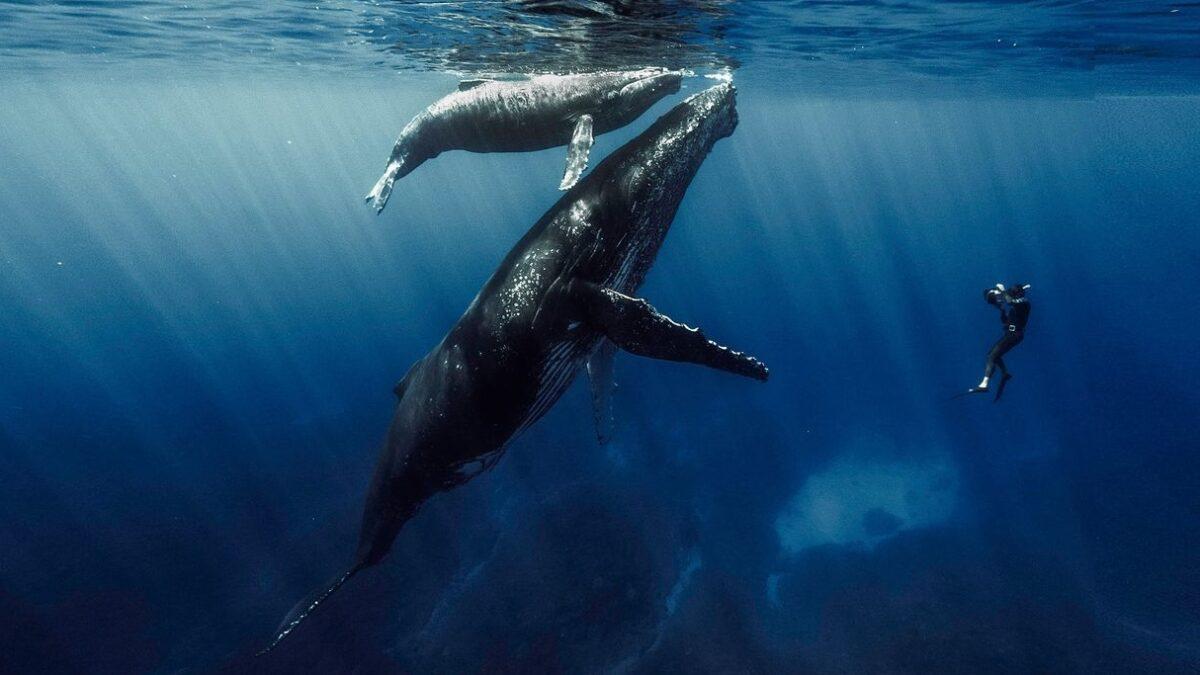Track humpback whales to better understand them
A team of scientists is deploying satellite tracking beacons on humpback whales off Reunion Island, where they come to breed in summer. The objective is to better understand the movements of these cetaceans.
The year 2022 is particularly favorable to see the many humpback whales present in Reunion. This is also the perfect time to launch Miromen II, an Argos satellite beacon operation. The operation is led by the scientific association Globice, which specializes in the study and conservation of cetaceans.
“Our objective is to have a very precise follow-up of the routes taken by the whales between the reproduction area of Reunion and their feeding area in Antarctica. This allows us to have an idea of their migratory route” , explains in the program Tout un monde of the RTS Violaine Dulau, president of Globice.
“Identifying these routes is important to determine if maritime traffic will have an impact on these migratory routes. It is also important to know where they feed to try to understand the effects of human activities and global warming on these populations.”
Delicate operation
Placing an Argos beacon of about 20 cm on the back of a cetacean about fifteen meters long is a rare and delicate operation. “We do this on a moving boat, with a moving animal, so you have to be well synchronized”, describes Amy Kennedy, specialist in placing beacons on whales.
“Beacon installation is done with a moving boat, on a moving animal, you have to be synchronized”, says Amy Kennedy, whale tagging specialist.
She specifies that the operation requires a very precise position. “You cannot place the tag anywhere. It must be very high on the whale’s body, just below or above the dorsal fin. It is this very specific position that will allow the tag to emit for a long time.”
Many surprises
Once the mission is accomplished, the whale’s journey can be followed in real time on a screen. Violaine Dulau is impatient to see the secrets that these beacons will reveal: “This is our second major beacon deployment campaign.”
“The first mission in 2013 had many surprises in store for us. We thought that the mothers stayed in Reunion, near the coast, with their young. But we saw that they traveled much more in the Indian Ocean than what we imagined. It is therefore not excluded that we will still have new surprises in 2022.”
Fight against global warming
Besides the fact that the humpback whale is a protected species, it can also be an asset against global warming. “Large cetaceans, such as humpback whales, blue whales or sperm whales, play an important role in the ocean, because they help store carbon”, explains Jean-Marc Gancille, from Globice.
“They produce bulky excrement loaded with iron and nitrogen which will fertilize phytoplankton, which stores carbon. This carbon is then ingested by zooplankton, which is the basis of the diet of large whales and which therefore end up in their body and will even penetrate their skeleton. When the whales die, they will sink to the bottom of the ocean and permanently sequester this CO2.”


Recent Comments